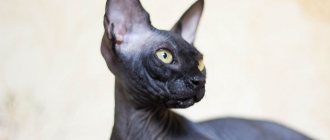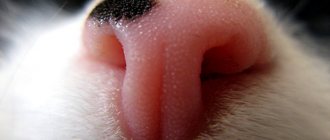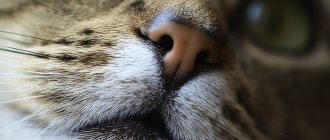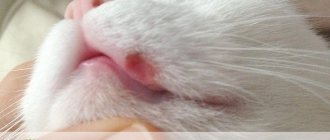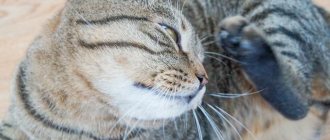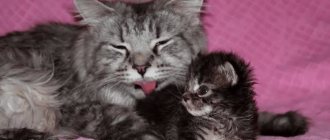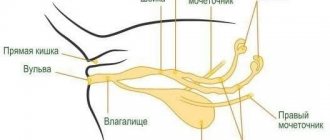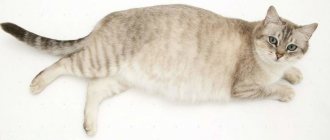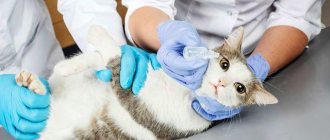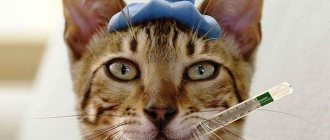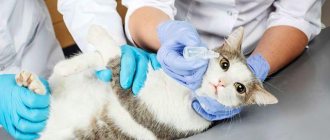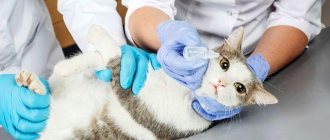Normally, a cat's feces are dark brown, well-formed, and look like a smooth sausage without foreign inclusions. But sometimes the color of stool for some reason becomes too dark or light, foul-smelling, liquid or hard. In such a situation, you should monitor the pet’s behavior, because often suspicious feces indicate the occurrence of a dangerous disease in the body, which cannot be started.
What's the normal color?
Feces in cats, like in humans, can tell everything about their health. The cat poops in dense, well-formed masses that are brown or dark brown in color. The consistency of excrement depends on the content of liquid, fat, and mucous components. The smell of feces is not unpleasant, not strong, this smell is called feces. If the diet is dominated by dairy and fermented milk products, cereals, and vegetables, the mass acquires a light brown tint. When a pet eats mainly meat, the excrement becomes a more saturated dark color.
Associated symptoms of diarrhea in cats
In addition to loose green stools, the following symptoms may indicate diarrhea::
- Increased body temperature.
- Change in animal behavior.
- The cat is thirsty all the time.
- The pet's body weight decreases.
- The quality of the cat's fur becomes poor.
- The mucous membranes of the animal turn pale.
- Appetite disappears.
© shutterstock
Green stool in a kitten with a liquid consistency, turning into a chronic condition, leads to dehydration of the animal’s body and the accumulation of toxins in it. In this case, metabolic processes are disrupted. The kitten's growth and development slow down.
Reasons for changes
If the color is dark
Very dark, almost black stool with an unpleasant odor indicates digestive problems. If food is not fully digested in the stomach and intestines, fermentation processes soon develop in these organs. Food particles rot, pathogenic microflora actively multiply, which is why the animal develops black stool.
Green color
Often, stool becomes like this due to the use of antibiotics by animals.
Dark green stool is often a symptom of ulcerative colitis or indicates liver problems. In the latter case, the cause is the presence of bilirubin in the stool, which should normally be absent. Green feces often appear in pets undergoing treatment with antibacterial agents. However, upon completion of therapy, the color should return to normal; if this does not happen, it is necessary to urgently show your pet to a veterinarian.
Light color
Pale, smelly, grayish feces appear in a kitten or adult cat due to the progression of inflammation of the gallbladder and ducts. Another reason why stool becomes pale is viral infectious diseases leading to liver dysfunction. Worm infestation also often contributes to constipation and the presence of depigmented excrement.
Light-colored feces occur in cats whose intestinal evacuation function is increased. As a result of the active promotion of chyme, it is not fully processed by gastric and intestinal juices. At the exit, the mass remains light because the nutrients from it are not completely adsorbed.
Melena or black mass
When there is gastric bleeding, the pet feels weak.
Often, black feces in a cat indicate extensive internal bleeding localized in one of the upper parts of the stomach. In this case, the blood enters the digestive organs and is processed there by enzymes. Melena is usually not the only symptom of the disorder. Along the way, the cat exhibits the following symptoms:
- nausea, vomiting;
- weakness;
- deterioration of general condition;
- heat;
- fainting or coma.
Other shades
Cat feces may also have the following colors:
Redness in the stool is characteristic of bleeding in the intestinal area.
- Red. If the black color of excrement indicates gastric bleeding, then red is evidence of intestinal bleeding. Feces can be solid or liquid, it all depends on the nature of the disease.
- Yellow. Speaks of gastric dysfunction and lack of enzymes involved in food digestion.
- Orange. Often indicates liver disease, accompanied by increased production of bilirubin. In addition, feces may turn orange due to your pet eating food with chemical dyes.
When to contact a veterinarian
Diarrhea in cats should be treated by a veterinarian, especially if the diarrhea lasts more than 24 hours and is accompanied by the following clinical picture:
- increased body temperature;
- weakness;
- pain in the abdominal area;
- frequent vomiting;
- impurities of blood and mucus in the stool;
- fetid odor of decomposition from feces;
- nervous phenomena.
If the cat can drink water on its own, then before sending it to the clinic or visiting a veterinarian, you need to provide it with plenty of fluids.
How are the causes of diarrhea identified?
To prescribe the correct treatment at home, a veterinarian must identify the causes of diarrhea in the cat. Diagnostic tests include:
- examination and collection of anamnestic data;
- detection of parasites in feces using flotation, specific staining and PCR;
- general and biochemical blood test;
- determination of the amount of pancreatic and thyroid hormones (if necessary);
- Ultrasound of the abdominal organs;
- endo- and colonoscopy.
To determine the type of tumor, a veterinarian will order a biopsy.
Diagnostic methods
To understand the reason for the change in the properties of excrement in an animal, it can undergo gastroscopy.
Before you begin to treat a disease, it is necessary to find out its causes and establish an accurate diagnosis. Therefore, you cannot do without a visit to the doctor. During the initial examination, the doctor will ask the owner how long the animal has been suffering from this condition, what other symptoms are present, and collect other important information. To confirm the diagnosis, a referral is given for the following additional diagnostic procedures:
- urine and blood analysis;
- biochemistry;
- microscopic examination of feces;
- radiography;
- Ultrasound of internal organs;
- gastroscopy.
What treatment is prescribed?
Medication
Depending on the diagnosis, the veterinarian selects the most optimal treatment regimen, which often includes the following groups of drugs:
Dicynone is able to stop a minor source of bleeding in an animal.
- Hemostatic. If diagnostics show that the cat is developing internal bleeding, but it is not life-threatening, the doctor will prescribe medications that can prevent the loss of vital fluid. Effective drugs in this group: “Dicinon”;
- "Tranexam";
- "Vikasol".
- "Penicillin";
- "Interferon";
- "Pyrantel";
- "Maalox";
Surgical
Sometimes surgery is the only option for an animal to return to normal.
Sometimes it is impossible to normalize a pet’s condition with medications alone, for example, with heavy internal bleeding. To save the animal's life, the doctor decides to perform surgical treatment. The manipulations are performed under general anesthesia. After the operation, a long recovery will be required, during which it is important for the owner to control the diet of his four-legged friend, as well as give him medications prescribed by the doctor to prevent the development of inflammatory processes and increase the body's defenses.
Therapy methods
For short-term intestinal disorders, medications are prescribed to help eliminate symptoms and maintain the animal’s body.
If only diarrhea is observed, the veterinarian will advise not to feed an adult animal for 1-2 days, and a kitten - for a maximum of 12 hours.
Based on the diagnosis, the specialist prescribes certain types of medications.
To restore the intestinal microflora, probiotics are prescribed: Bifitrilak, Bifidum or Kaopectate.
It is recommended to give activated carbon or Smecta to kittens. Only a veterinarian selects the dosage and timing of treatment .
In case of profuse chronic disorders, it is necessary to give your pet Papaverine. The action of the medication helps reduce intestinal spasms and restores peristalsis.
Sorbents also play an equally important role in eliminating green diarrhea. Enterosgel is often prescribed. It removes toxins, heavy metal salts and other harmful substances that affect digestion from the cat’s body.
To treat an animal at home, it is recommended to use decoctions of chamomile, St. John's wort and oak bark. These plants have an anti-inflammatory and tonic effect.
For a kitten, 2 ml of decoction per day is enough; for an adult animal, the dose is tripled. It is necessary to give the prepared product until stool is completely normalized.
Prevention
To ensure that your cat does not have problems with defecation, and that the color and consistency of feces always corresponds to the norm, it is important to follow simple preventive rules. Once every six months, the animal should be treated with anthelmintic drugs and treated for cat lice and fleas. In addition, it is worth adjusting the diet and, if necessary, switching to ready-made medicinal factory feed. If your pet's stool stinks and has an uncharacteristic color, it is forbidden to self-medicate. Only a treatment regimen correctly selected by a doctor will help eliminate the disease and prevent complications.
Causes of diarrhea in cats
Diarrhea in a cat is not an independent disease, but is a pathological condition that is manifested by an increase in the number of bowel movements, loose stools, pain and bloating. It is caused by pathogenic microorganisms, intestinal parasites and non-infectious factors.
Some types of diarrhea do not require treatment, since they do not pose a threat to the life of cats and go away on their own within 24 hours. But with chronic diarrhea, the animal needs emergency help from a veterinarian.
Experts identify acute diarrhea in cats, which does not require treatment. It goes away after the root cause is eliminated and can be caused by the following factors:
- binge eating;
- severe stress;
- transportation or visiting a public place (clinic, exhibition);
- a radical change in diet or switching to food from another manufacturer.
Since cats are very picky about food, they almost never develop diarrhea due to the consumption of low-quality foods.
Important! Despite the popular belief that cats love milk most of all, many pets have an intolerance to dairy products. After your cat eats them for the first time, she may remain active but may have loose stools.
The causes of chronic diarrhea are:
- bacterial and viral infections;
- worms;
- poisoning;
- inflammation of the gastrointestinal tract;
- chronic pancreatitis;
- dysfunction of the pancreas;
- long-term uncontrolled use of medications;
- neoplasms;
- malabsorption of nutrients after intestinal surgery;
- renal failure;
- hyperfunction of the thyroid gland.
Diarrhea in kittens can also be caused by intussusception, when one segment of the intestine enters another. The etiology of this pathology in young animals up to one year remains unclear. Sometimes it is a consequence of feline panleukopenia or is formed under the influence of a growing tumor.
